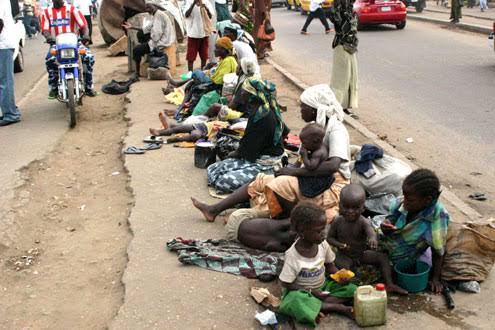A new report has shed light on the economic vulnerability of Nigerian households, showing significant disparities in poverty risk across the country’s six geopolitical zones. The data, compiled by the Global Multidimensional Poverty Index (GMPI) in collaboration with the Oxford Poverty and Human Development Initiative (OPHI) and published by Statisense, highlights the percentage of households in each region that are considered vulnerable to poverty in 2023.
According to the report, the North Central zone tops the list with 22.58% of households identified as being at risk of falling below the poverty line. This is closely followed by the North East, where 21.47% of households are vulnerable, reflecting the ongoing socio-economic challenges and insecurity that have plagued the region.
In the South South, often regarded as Nigeria’s oil-rich zone, 19.44% of households remain vulnerable to poverty. Despite the region’s resource wealth, many communities continue to struggle with underdevelopment and economic instability.
The South West, home to some of Nigeria’s largest urban economies including Lagos, showed a vulnerability rate of 17.18%, while the North West recorded 13.61%, indicating relatively lower levels of economic fragility compared to the northern and southern counterparts.
Surprisingly, the South East had the lowest poverty vulnerability rate at 11.47%, suggesting a more resilient household economic structure in the region, possibly attributed to widespread entrepreneurship and remittances from the diaspora.
Experts Call for Regional Economic Policies
The findings have prompted renewed calls from economists and development experts for region-specific economic policies that address the unique challenges of each zone. Analysts warn that failure to tailor social protection programs and job creation strategies to local realities could deepen existing inequalities.
Speaking on the data, a development economist noted, “These figures reflect not just income disparities but multidimensional poverty — including lack of access to education, healthcare, and proper living standards. The North Central and North East in particular need urgent, focused interventions.”
Federal and State Government Interventions Needed
The federal and state governments are being urged to review their poverty alleviation strategies and increase investments in infrastructure, education, and health — especially in high-risk zones. With Nigeria battling rising inflation and a growing youth population, the stakes are high for sustainable economic recovery and inclusive growth.
As 2024 approaches, stakeholders believe these poverty indicators should serve as a guiding compass for policy formulation, resource allocation, and donor support, ensuring no region is left behind in Nigeria’s fight against poverty.




